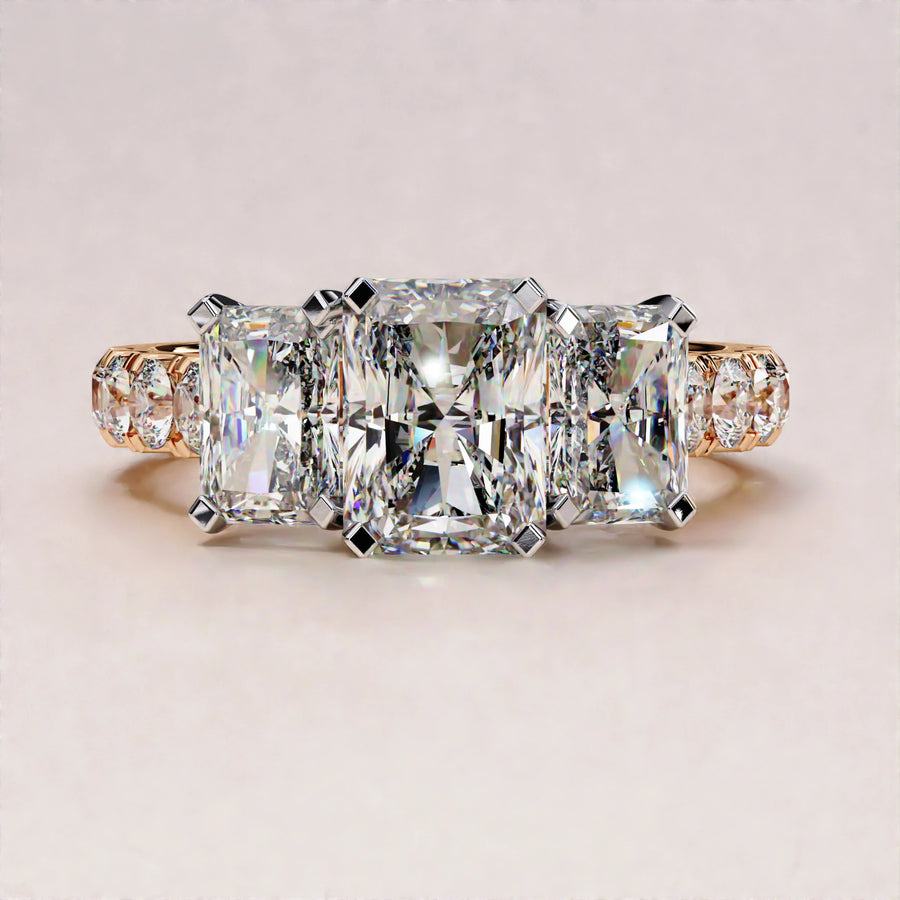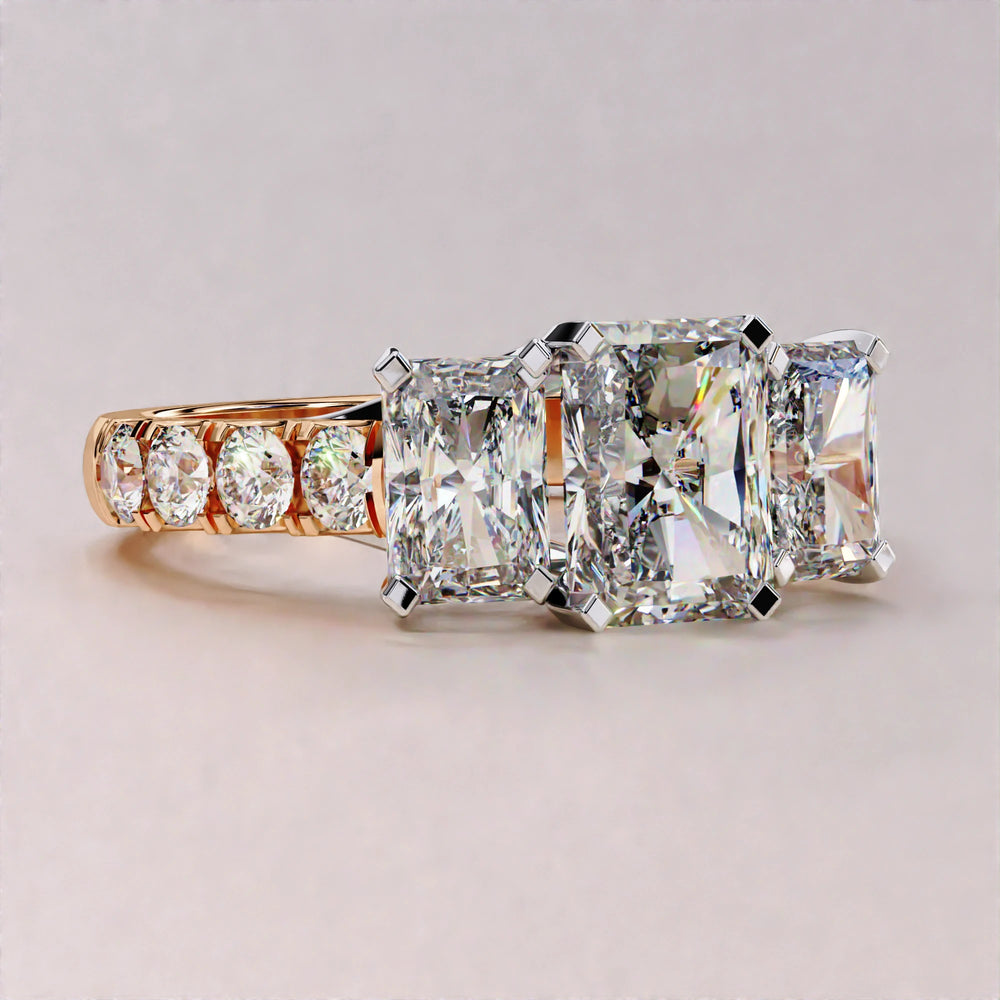Moissanite vs Lab Diamond: What's the Difference?
When shopping for an engagement ring or fine jewelry, many people face a modern dilemma: Moissanite vs Lab Diamond – What’s the Difference? They both look incredibly similar at first glance, they’re both affordable alternatives to mined diamonds, and they’re both ethical choices. But dig a little deeper, and you’ll discover key differences in their composition, brilliance, price, and even durability.
In this comprehensive guide, we’ll break down everything you need to know about Moissanite vs Lab Diamond: What’s the Difference?, so you can make an informed, confident decision on which stone best fits your style, values, and budget.
What Are Moissanite and Lab Grown Diamonds?
Moissanite: A Space-Born Sparkler
Moissanite was originally discovered in a meteor crater by scientist Henri Moissan in 1893. While natural Moissanite is extremely rare, nearly all Moissanite used in jewelry today is lab-created. It's composed of silicon carbide and is known for its fiery brilliance and affordability.
Lab Grown Diamonds: Real Diamonds, Just Not Mined
Lab grown diamonds are identical in chemical and physical structure to natural diamonds—they’re made of pure carbon and formed using advanced technology that replicates the high pressure and high temperature (HPHT) or chemical vapor deposition (CVD) processes found in nature. So while both stones are created in a lab, their composition and characteristics vary greatly.
Moissanite vs Lab Diamond: What’s the Difference?
Let’s break it down across the most important categories:
1. Composition and Appearance:
-
Moissanite: Silicon carbide. It has a slightly warmer hue and a rainbow-like fire due to its higher refractive index.
-
Lab Diamond: Pure carbon. Offers the same look, feel, and brilliance as a mined diamond.
Verdict: If you want a stone that looks exactly like a natural diamond, lab diamonds are the better match. Moissanite is gorgeous but may appear “too sparkly” or “disco-ball-like” to some.
2. Brilliance and Fire
-
Moissanite: Has more fire (color flashes) and brilliance due to its higher refractive index (2.65–2.69).
-
Lab Diamond: Still sparkles beautifully, but with a more subtle and classic diamond brilliance (refractive index of 2.42).
Tip: If you love extra sparkle and a fiery look, moissanite might be your stone. For a more traditional diamond shine, lab diamonds win.
3. Durability and Hardness
-
Moissanite: 9.25 on the Mohs scale.
-
Lab Diamond: 10 on the Mohs scale (the hardest known natural substance).
Verdict: Both are extremely durable for everyday wear, but lab diamonds are slightly harder and more scratch-resistant.
4. Price Comparison
-
Moissanite: Generally 90% cheaper than natural diamonds and significantly more affordable than lab diamonds.
-
Lab Diamond: About 40–70% less than mined diamonds, but still more expensive than Moissanite.
Example:
A 1-carat Moissanite may cost around $400–$600, while a 1-carat lab diamond might range from $1,000 to $3,000, depending on the 4 Cs.
5. Ethical and Environmental Impact
-
Moissanite: Always lab-created, Moissanite is 100% conflict-free and eco-friendly.
-
Lab Diamonds: Also conflict-free and more sustainable than mined diamonds. However, the energy usage in some lab diamond production methods (like HPHT) may be higher.
Pro Tip: Look for lab diamonds certified as carbon-neutral or grown with renewable energy for maximum sustainability.
6. Certification and Grading
-
Moissanite: Usually graded only for color (not cut or clarity) and often lacks formal certification.
-
Lab Diamonds: Graded just like natural diamonds by labs like GIA, IGI, and GCAL, based on the 4 Cs: Cut, Color, Clarity, and Carat.
If certification matters to you, lab diamonds offer a more traditional and transparent grading system.
7. Resale Value
-
Moissanite: Low resale value; it's not typically considered a long-term investment.
-
Lab Diamond: Also has lower resale value than natural diamonds but holds more value than Moissanite.
Verdict: Neither is ideal for resale, but lab diamonds retain slightly more value.
Who Should Choose Moissanite?
Choose Moissanite if:
-
You want maximum sparkle on a smaller budget.
-
You're not attached to the idea of a “real” diamond.
-
You prioritize ethics and affordability.
-
You love a fiery, eye-catching stone.
Who Should Choose a Lab Grown Diamond?
Choose a lab diamond if:
-
You want the look and feel of a mined diamond at a lower price.
-
You want a traditional engagement ring experience with certification.
-
You care about ethical sourcing and diamond authenticity.
-
You’re seeking a more subtle sparkle and long-lasting beauty.
Thought:
When it comes to Moissanite vs Lab Diamond: What's the Difference?, it all comes down to what matters most to you—appearance, price, ethics, and value. Moissanite offers fire, affordability, and sustainability. Lab diamonds deliver authenticity, certification, and classic elegance.
There’s no wrong choice—only the one that aligns best with your heart, budget, and sparkle goals. Whichever you choose, you’ll be wearing something beautiful, meaningful, and ethical.
Also read: How to Buy Diamond Earrings: The Ultimate Guide to Sparkle & Style























